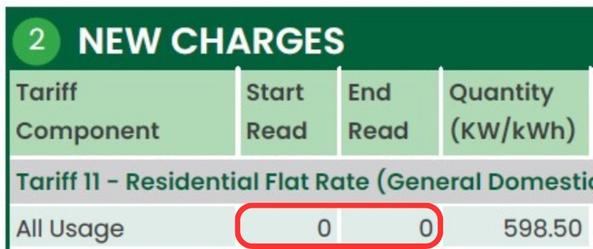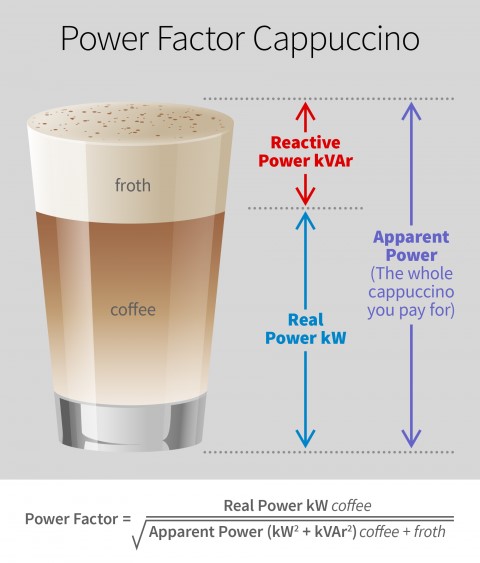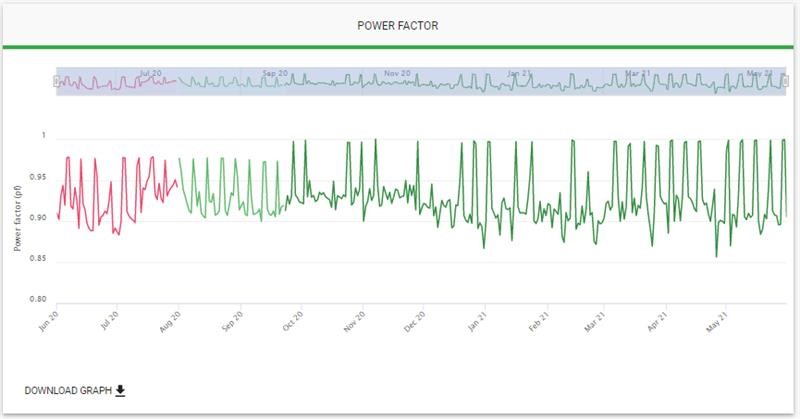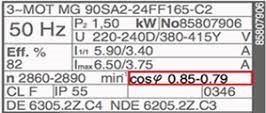kVA Tariffs
A key challenge for businesses is ensuring they’re getting the most value out of the power they’re paying for.
To encourage large electricity users to increase the value they get from their electricity and minimise their bills, kVA tariffs have been introduced across the National Electricity Market, including customers of Ergon Energy Retail.
Put simply, less efficient equipment doesn’t use all the power it draws from the network and therefore some of that electricity can be lost. Less efficient equipment puts a greater strain on the electricity network as more energy is needed to operate equipment.
This measurement of equipment efficiency is called power factor. Inefficient electrical systems have lower power factors (on a scale of 0 to 1) and tend to use a large quantity of reactive power (kVAr), which is lost in the operation of inductive equipment such as transformers and electric motors.
If you have efficient equipment (i.e. a power factor closer to 1), your bills will be lower with a kVA tariff than they were before. Efficiency also benefits all Ergon Energy Retail customers as demand on the network is reduced and pricing becomes fairer.
What does this mean for me?
Changes to regulations and policy in the National Electricity Market are driving the move to fairer, more cost-reflective pricing. The installation of smart meters now gives retailers the data to detect the true amount of power supplied to their property.
From 1 July 2021, any large Standard Asset Customer (SAC) with a smart meter or demand register must move to a kVA tariff. The only exception is where your smart meter has been upgraded by Ergon Energy Network within the last 12 months. For these businesses, you have 12 months from the date of installation to switch to a kVA tariff before you are switched automatically. If you requested the meter upgrade to a smart meter, you must be on a kVA tariff from the date of installation.
kVA tariffs offer businesses the opportunity to save money on their power bill if they can operate more efficiently and keep the average power factor of their equipment as close to 1 as possible.
Frequently asked questions
What kVA tariffs are currently available and what are the rates?
The Queensland Competition Authority (QCA) sets out which tariffs Ergon Energy Retail can offer as well as the prices it must charge. These generally change each year on 1 July.
You can find the rates for current kVA tariffs on our large business tariffs page.
Will the cost of my electricity supply change?
Depending on the efficiency of the equipment or machinery you’re using, your bill could change. If you utilise equipment with higher energy efficiency, then you may see a slight reduction in your bill. If your equipment is less efficient it may mean a slightly higher bill. This is dependent on your business’ unique equipment array, usage patterns and tariff choices.
How do I know if I have a smart meter?
On page 2 of your bill under "New Charges", if your ‘’start read’’ and "end read" is zero, then you have a smart meter. Smart meter reads are reset to zero after each bill is issued.

Will my bill look different with these new tariffs?
On the second page of your bill under "New Charges", you'll see a demand charge listed. This indicates that you're on a kVA tariff.
What's the difference between kW and kVA?
kW = is known as ‘real power’. This is the measure/unit of electric power:
- Often seen on specification plates of appliances
- Air conditioners, for example are measured in kilowatts (e.g. 2.5kW)
kVA = is known as the ‘apparent power’ of a particular electrical circuit or electrical system:
A kilovolt-ampere (kVA) is 1000 volt-amperes. This is a measure of apparent power flow, a measure of the total capacity required to supply a customer’s load. Apparent power is a measure of the current and voltage and will differ from real power when the current and voltage are not in phase.

Do I get charged for both kW & kVA demand?
No, you will only be charged one or the other depending on which tariff you are on. Usage will continue to be measured and billed in kWh.
How are kVA tariffs calculated?
Please visit Ergon Energy Network's business network tariffs explained webpage for further information.
How do I find what my overall power factor (PF) is?
Log into My Account and click on the Energy Analysis tile - You can see your power factor by going to the left hand navigation menu and selecting “power factor” (large customers only).
The power factor information will look like this:

Want to learn more?
These tutorials will take you through a step-by-step view on how to get the most from Energy Analysis.
Can I improve my power factor?
Yes, this is called ‘power factor correction’. Power factor can be improved by installing power factor correction (PFC) equipment called capacitor banks. Capacitor banks work to correct energy supply inefficiencies, while also reducing peak demand on the electricity network. Speak to your licensed electrical contractor about what PFC equipment may be right for you.
I don’t have a smart meter now, will I get one in the future?
Yes, when your meter reaches the end of its useful life, it will be replaced. Queensland is targeting 100% penetration of smart meters by 2030.
In the meantime, if your current analogue meter is no longer meeting your needs (e.g. you’re installing solar or you’re changing to a new tariff) then you can request an upgrade to a smart meter. You’ll then have to switch to a kVA tariff on the day of installation or on or before the first anniversary of the meter replacement.
Power factor
Power factor is a way of measuring the efficiency of an appliance and is expressed as a value between 0 and 1. The more efficient the equipment, the closer the power factor is to the number 1.
Most motor nameplates rate the power factor. Check for an Efficiency Percentage (Eff %), PF, F or Cos Φ. This will tell you what the power factor number or range is for that piece of equipment.

It’s possible to improve your power factor by installing capacitor banks on existing equipment and this can be done by engaging a licensed electrical contractor.
If you’d like more detail on capacity tariffs, power factor and the impact of equipment on your bills, check out some of these useful links:
- Information from Ergon Energy Network on business network tariffs.
- To understand power factor better and how to improve it, here’s a video from The Engineering Mindset.
- How to use My Account to see and get in control of your usage, power factor and bills.